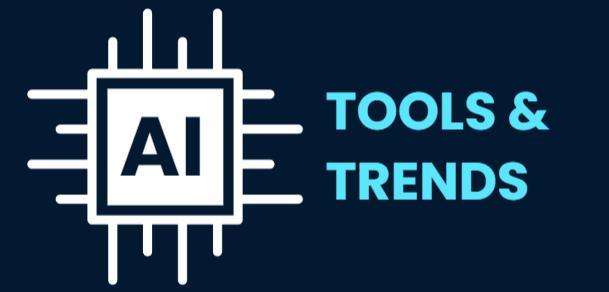
Cloud computing is a buzzword that has been around for a while, but what does it really mean? And how can it benefit your business?
In this article, we will explain the definition, benefits, types, pros and cons, and trends of cloud computing.
What is Cloud Computing?
Cloud computing is the delivery of computing services, such as servers, storage, databases, networking, software, analytics, and intelligence, over the internet.
Instead of buying, owning, and maintaining physical data centers and servers, you can access these services on demand from a cloud provider.
Cloud computing allows you to access your data and applications from anywhere, anytime, and from any device.
You only pay for what you use, and you can scale up or down as your needs change. Cloud computing also offers greater security, reliability, and performance than traditional IT infrastructure.
What are the Benefits of Cloud Computing?
Cloud computing offers many benefits for businesses of all sizes and industries.
Some of the main benefits are:
¡》Cost savings:
Cloud computing eliminates the upfront cost and complexity of owning and maintaining your own IT infrastructure. You only pay for what you use, and you can benefit from the economies of scale of the cloud provider.
¡¡》Scalability:
Cloud computing allows you to easily adjust your resources and capacity according to your business needs. You can scale up or down in minutes, without having to worry about hardware limitations or wasted resources.
¡¡¡》Agility:
Cloud computing enables you to innovate faster and respond to changing market conditions and customer demands.
You can launch new products and services, test new ideas, and deploy new features quickly and easily.
¡V》Security:
Cloud computing offers enhanced security for your data and applications. Cloud providers invest in the latest security technologies and best practices, and they comply with various industry standards and regulations.
You can also encrypt your data, control access, and monitor activity on the cloud.
V》Reliability:
Cloud computing ensures that your data and applications are always available and accessible, even in the event of a disaster or outage. Cloud providers offer backup and recovery solutions, and they guarantee high availability and uptime for their services.
V¡》Performance:
Cloud computing delivers high performance and speed for your data and applications. Cloud providers use advanced technologies and infrastructure, such as fast networks, powerful servers, and optimized software, to ensure optimal performance and efficiency.
What are the Types of Cloud Computing?
Cloud computing can be classified into three main types, based on the service model:
1. Infrastructure as a Service (IaaS):
IaaS is the most basic type of cloud computing, where you rent servers, storage, and networking from a cloud provider.
You have full control over the configuration and management of these resources, and you can run any software or application on them.
Examples of IaaS providers are Amazon Web Services (AWS), Microsoft Azure, and Google Cloud Platform (GCP).
2. Platform as a Service (PaaS):
PaaS is a type of cloud computing where you use a cloud provider’s platform to develop, run, and manage your applications.
You don’t have to worry about the underlying infrastructure, and you can focus on the code and logic of your applications.
Examples of PaaS providers are Heroku, Salesforce, and Shopify.
3. Software as a Service (SaaS):
SaaS is a type of cloud computing where you use a cloud provider’s software applications over the internet.
You don’t have to install, update, or maintain the software, and you can access it from any device and location. Examples of SaaS providers are Gmail, Netflix, and Zoom.
What are the Pros and Cons of Cloud Computing?
Cloud computing has many advantages, but it also has some drawbacks. Here are some of the pros and cons of cloud computing:
Pros/Advantages
- Flexibility: Cloud computing gives you the flexibility to choose the type, level, and duration of the services you need, and to change them as your business evolves.
- Efficiency: Cloud computing improves the efficiency and productivity of your business processes, as you can access your data and applications faster and easier, and collaborate with your team and customers more effectively.
- Competitiveness: Cloud computing gives you a competitive edge, as you can leverage the latest technologies and innovations, and offer better products and services to your customers.
Cons/Disadvantages
Dependency: Cloud computing makes you dependent on the cloud provider, and you may face issues such as downtime, service disruptions, or data loss, if the provider fails to deliver or meet your expectations.
Security risks: Cloud computing exposes you to security risks, such as cyberattacks, data breaches, or unauthorized access, if the provider or you fail to implement adequate security measures and policies.
Compliance challenges: Cloud computing poses compliance challenges, as you may have to comply with different laws and regulations, depending on the location and nature of your data and applications.
What are the Trends of Cloud Computing?
Cloud computing is a dynamic and evolving field, and it is constantly influenced by new technologies and trends.
Some of the current and future trends of cloud computing are:
¡》Hybrid cloud:
Hybrid cloud is a combination of public and private cloud, where you can use both types of cloud for different purposes and benefits. For example, you can use public cloud for scalability and cost savings, and private cloud for security and control.
¡¡》Multi-cloud:
Multi-cloud is a strategy of using multiple cloud providers and services, to avoid vendor lock-in, optimize performance, and reduce costs. For example, you can use AWS for IaaS, Salesforce for PaaS, and Gmail for SaaS.
¡¡¡》Edge computing:
Edge computing is a paradigm of bringing computing closer to the source of data, such as devices, sensors, or users, to reduce latency, bandwidth, and costs.
For example, you can use edge computing for real-time applications, such as autonomous vehicles, smart cities, or gaming.
¡V》Artificial intelligence (AI):
AI is a branch of computer science that aims to create machines and systems that can perform tasks that normally require human intelligence, such as learning, reasoning, and decision making. For example, you can use AI for data analysis, customer service, or personalization.
V》Serverless computing:
Serverless computing is a model of cloud computing where you don’t have to provision, manage, or pay for servers, and you only pay for the execution time and resources of your functions.
For example, you can use serverless computing for event-driven applications, such as webhooks, chatbots, or IoT.
Conclusion
Cloud computing is a revolutionary technology that can transform your business in many ways. It offers many benefits, such as cost savings, scalability, agility, security, reliability, and performance.
It also has some drawbacks, such as dependency, security risks, and compliance challenges. It has different types, such as IaaS, PaaS, and SaaS, and it is influenced by various trends, such as hybrid cloud, multi-cloud, edge computing, AI, and serverless computing.
We hope this article has helped you understand what cloud computing is, and how it can benefit your business. If you have any questions or comments, please feel free to leave them below.
Thank you for reading.
RELATED ARTICLES
- What is Networking? Definition, Types and everything You Need to Know










https://membresmackay.ca/wd138
Rattling great info can be found on blog.Blog monetyze